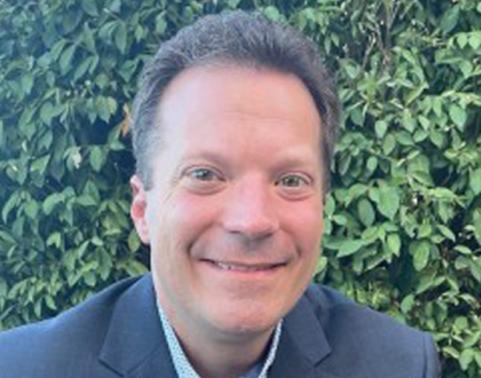Meet PEO EIS’ new Agile coach: Scott Sinclair

U.S. Army Program Executive Office Enterprise Information Systems (PEO EIS) is growing its Lean Agile Center of Excellence (LACE) — most recently, with the hire of Agile coach Scott Sinclair.
Sinclair, who has worked in the federal acquisition space for 17 years, joined the LACE after serving as an enterprise Agile coach for EIS’ Enterprise Business Systems – Convergence and briefly with the General Fund Enterprise Business System. Before that, he worked with Air Force Acquisitions Integration supporting the Secretary of the Air Force Acquisition Excellence and Change Office and for the Department of Justice supporting several programs in the Criminal Justice Information Services Division.
Besides providing Agile-related support to programs across EIS’ five portfolios, Sinclair plans to hold a monthly internal Communities of Practice with team members to discuss challenges related to Scaled Agile Framework® (SAFe®) implementation and how to resolve them.
Sinclair has already hit the ground running with a survey about team members’ Agile pain points and some coaching engagements with the Army Contract Writing System and Computer Hardware, Enterprise Software and Services teams.
Sinclair recently shared information on his background, interests and plans with PEO EIS team members.
When did you become an Agilist — and how do you define that concept?
I became an Agilist in around 2015 while doing Agile-related work for the National Defense Industrial Association and working with Air Force Contracting on an Agile contracting toolkit. That experience enabled me to have opportunities like visiting Kessel Run, an Air Force Agile delivery organization. That visit changed my life. It was a very cool experience for me. From there, I rolled over into doing some Agile certifications and coaching, then transitioned to some LACE teams. To me, an Agilist is somebody who embodies the Agile mentality, thoughts of improvement and leveraging best practices and lessons learned.
What are some of your goals as an Agile coach?
My overarching goal is to drive value to the government and help us continuously improve. Right now, I’m an army of one — there will soon be two of us, but we will help as much as we can to provide the support needed to the organization. We are working toward our own roadmap and prioritization of efforts to ensure we are helping the programs with highest needs first. From a government civilian perspective, my goal for the next year — even the next six months — is to get through all the training that’s currently available from the Defense Acquisition University and enhance it with the latest tools/techniques to help enforce the Agile mindset and equip the workforce for success.
How important is it to learn specifically about the SAFe approach?
I think it’s very valuable to spend some time in the SAFe framework – to understand what it’s all about, its utility and best practices. If you haven’t taken a SAFe class, I’d recommend the “Leading SAFe” fundamentals class to give you the foundational knowledge as we execute it at EIS.
Outside of the office, what activities do you enjoy pursuing?
My wife Tasha, our dog Kona and I live full-time in West Virginia and are closely connected with our state. I spend time with my alma mater discussing Agile with the Information Systems Management and Program Management classes at Fairmont State University. I also help students with capstone projects and mentor soon-to-be graduates with resume building/interview prep to set them up for success post-graduation in finding careers. I also enjoy watching Mountaineer football, reading, detailing cars and spending time at the beach.
Any Agile-related books you can recommend?
My favorite book is “Project to Product” by Mik Kersten. I believe it changes the way we think about work in the government as a whole. The concept of flow metrics comes from that book as well.
Related News
-
Onedia James: a logistician and leader with a family legacy of service
April 22, 2025Onedia James recently stepped into the role of acting deputy project manager for Army Data and Analytics Platforms (ARDAP) at U.S. Army Program Executive Office (PEO) Enterprise, where she helps oversee and support the data portfolio’s four programs. -
PEO Enterprise’s new PL Digital Market reimagines IT product/service procurement
April 2, 2025FORT BELVOIR, Va. – U.S. Army Program Executive Office (PEO) Enterprise today announced the launch of the Product Lead (PL) Digital Market, which replaces PL Computer Hardware, Enterprise Software and Services (CHESS), effective Apr. 2, 2025. -
Two vastly different Army programs prepare for Software Acquisition Pathway
March 24, 2025At U.S. Army Program Executive Office Enterprise, which is now over two years into its Agile transformation, several enterprise software programs are already in the execution phase of the DOD’s Software Acquisition Pathway, which is designed to facilitate rapid and iterative delivery of software capability to users.
Work for Us
Join a winning team! Search for job opportunities with PEO Enterprise.
Work with Us
Help support important missions. Explore ways your company can work with PEO Enterprise.